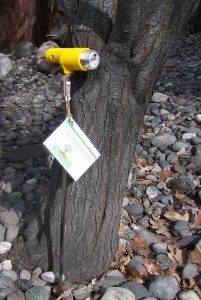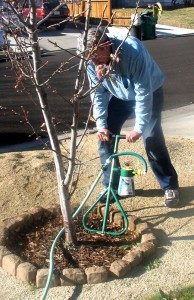What is Deep Root Feeding?

Compacted soils, common in the Truckee Meadows, make it difficult for trees to get the water, nutrients and air they need to thrive. An inexpensive tool known as a root feeder is the best way to get nutrients to the roots of a tree living in compacted soil. If the tree is located in turf, dethatching the lawn can help too.
A root feeder joins to a garden hose and has an attached container that is filled with fertilizer. Root feeding injects fertilizers, insecticides and other soil enhancers directly into the tree’s root zone, which is where most nutrients are absorbed. One of the most important advantages of root feeding is that it breaks up compacted soils, allowing air, water and nutrients to get to the tree’s roots, encouraging roots to go deeper into the ground. In turf areas or in contained spaces, using a root feeder can encourage downward growth, directing roots growth away from driveways or sidewalks.
Using a root feeder to treat trees three times per year is a best practice for maintaining tree health – once each in the spring, summer and fall. It can stimulate trees that may have been stressed by disease, insects or drought.

Benefits
Deep root feeding will save water because it is more efficient than surface watering, feeding only the tree, not weeds that could be growing on the surface. It is also environmentally friendly because it reduces erosion, evaporation and fertilizer runoff.
